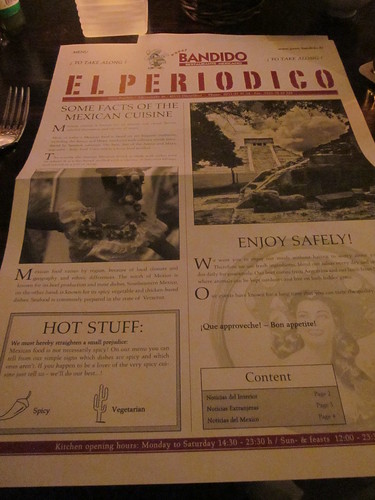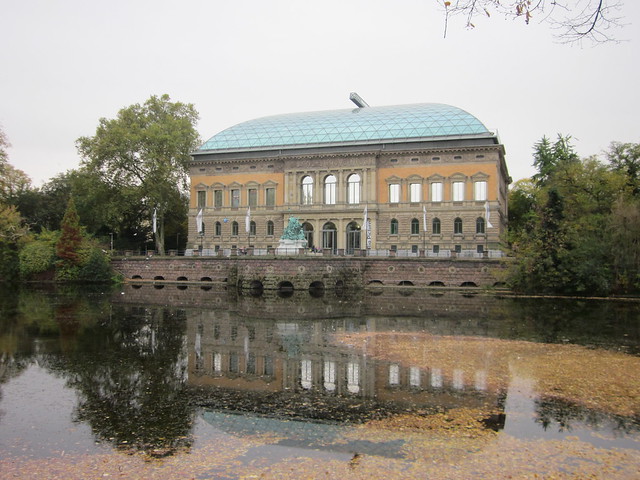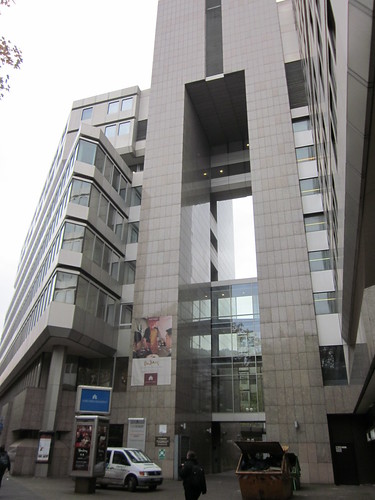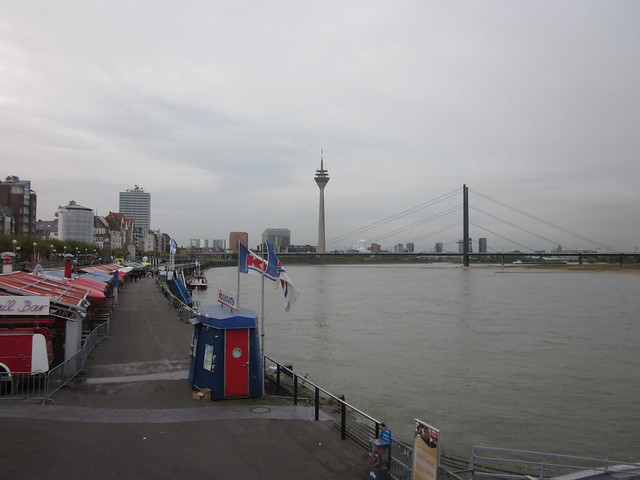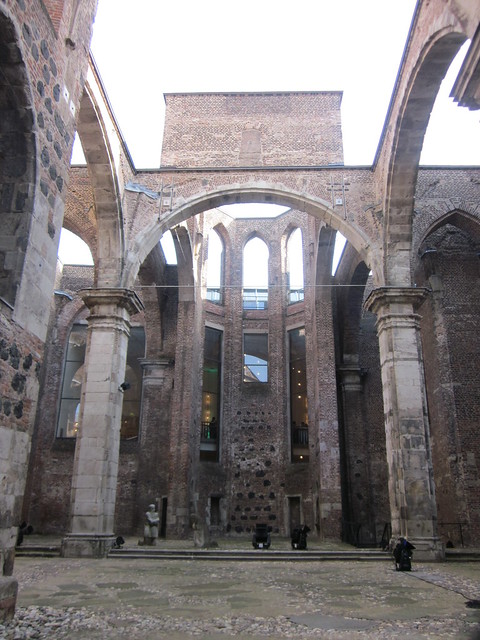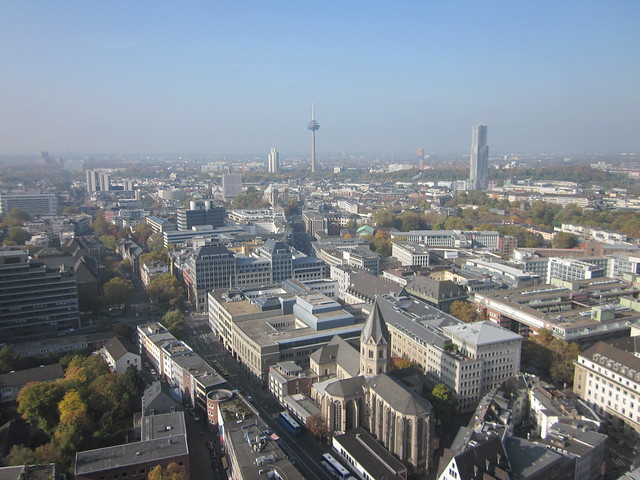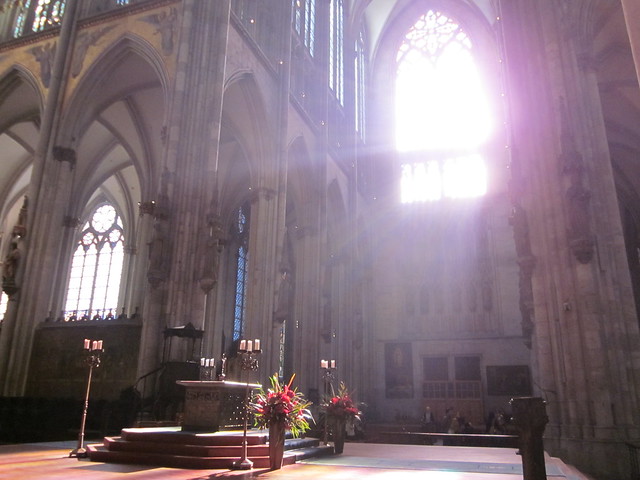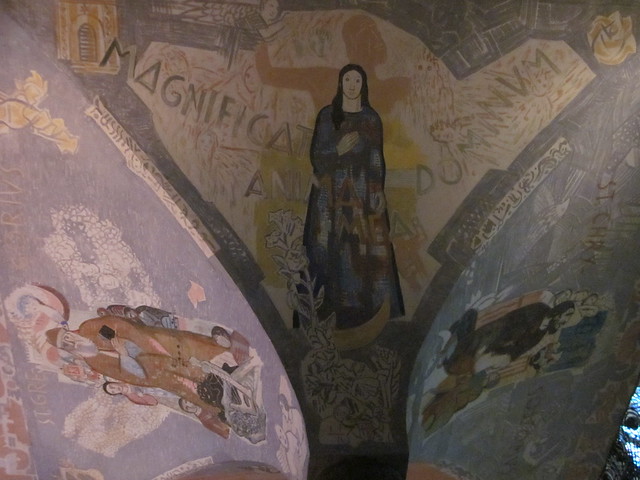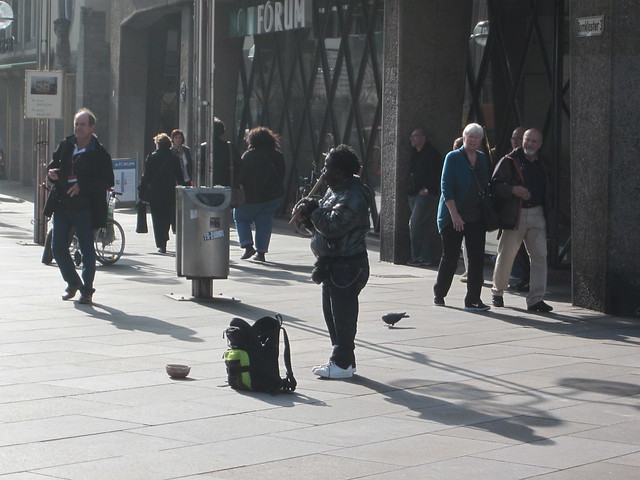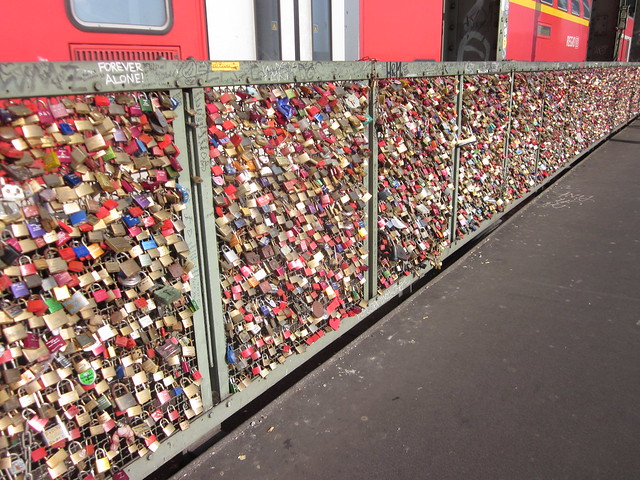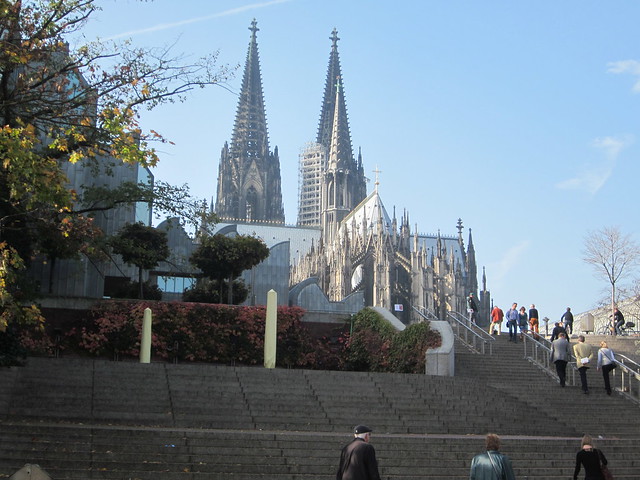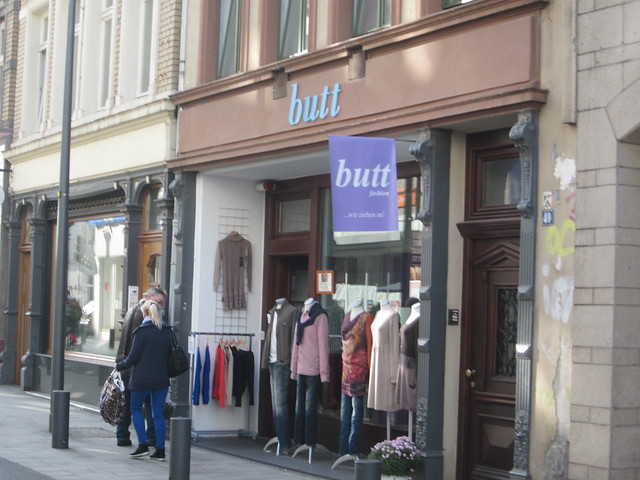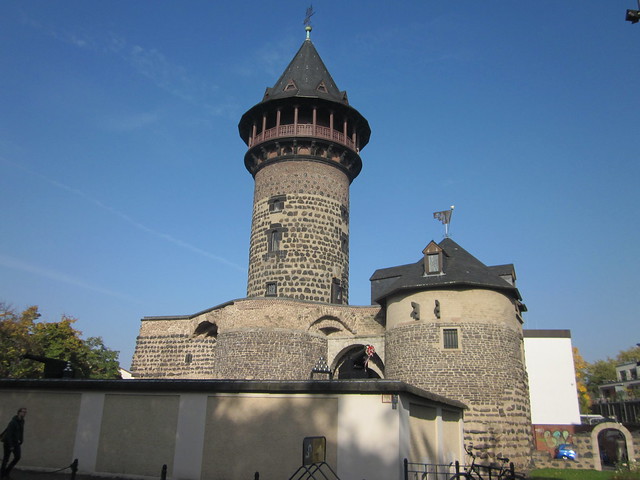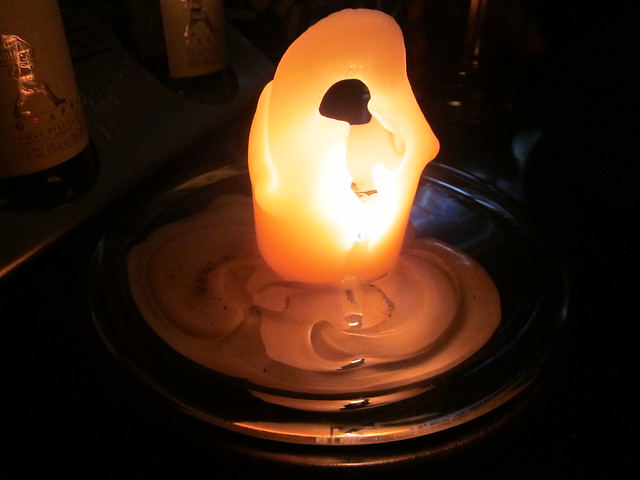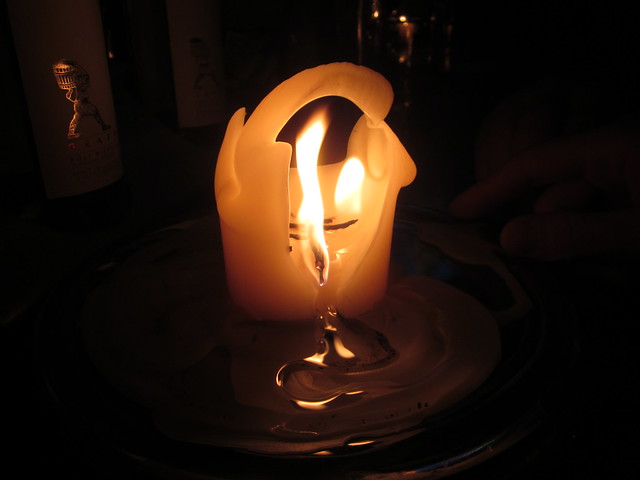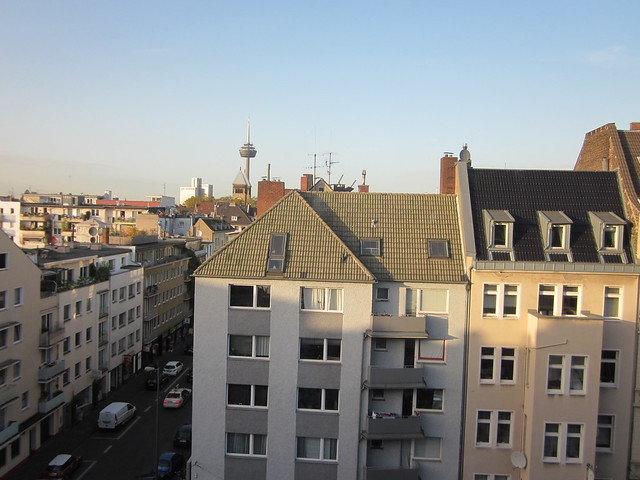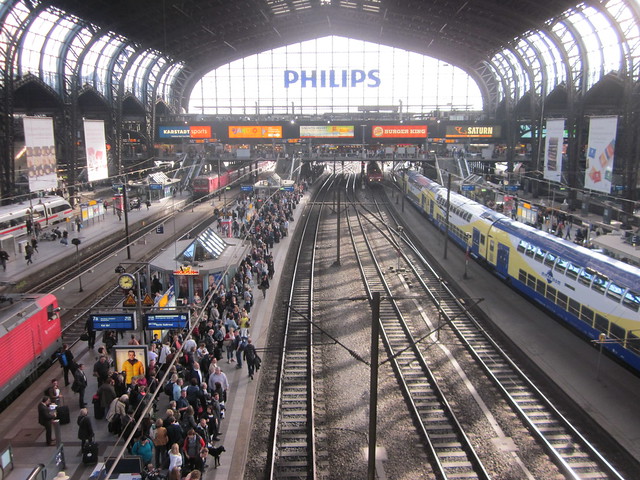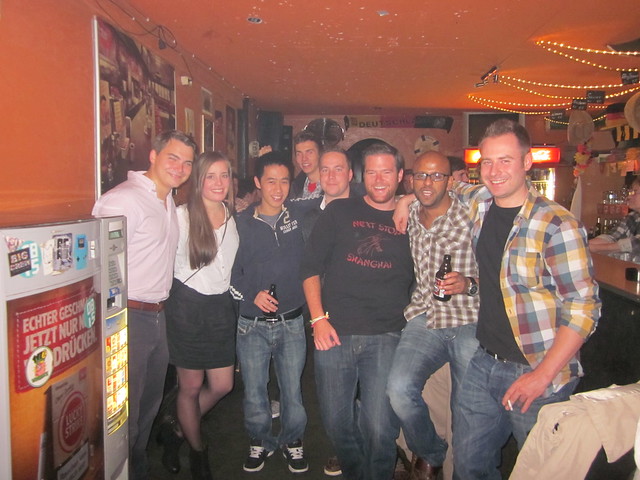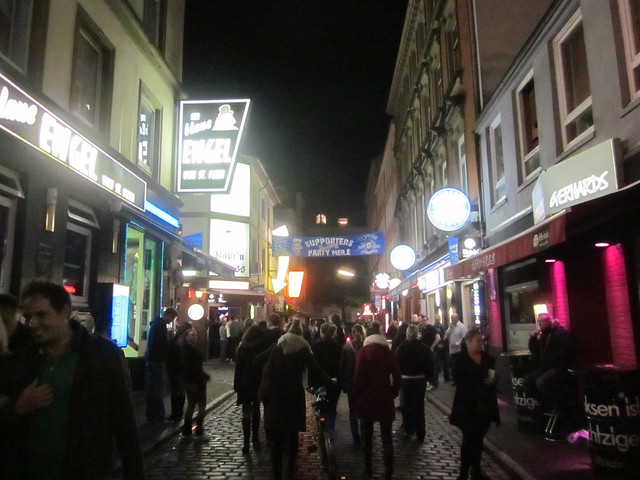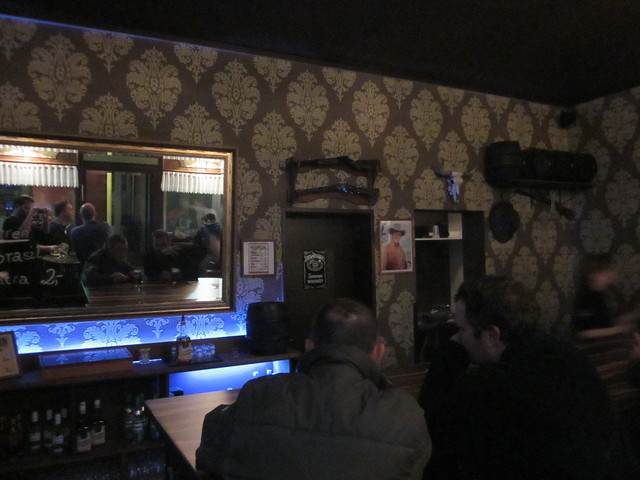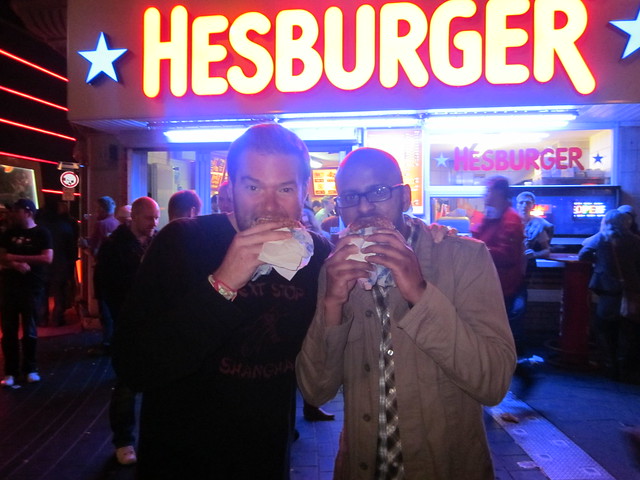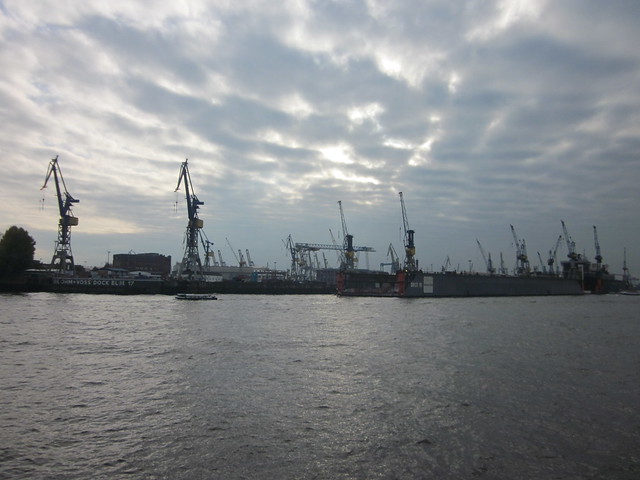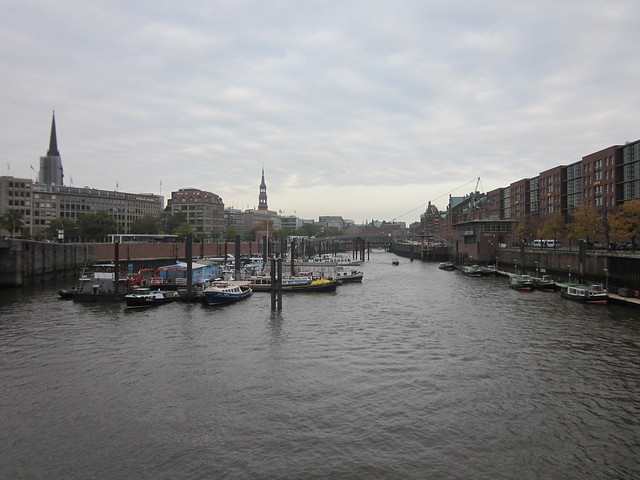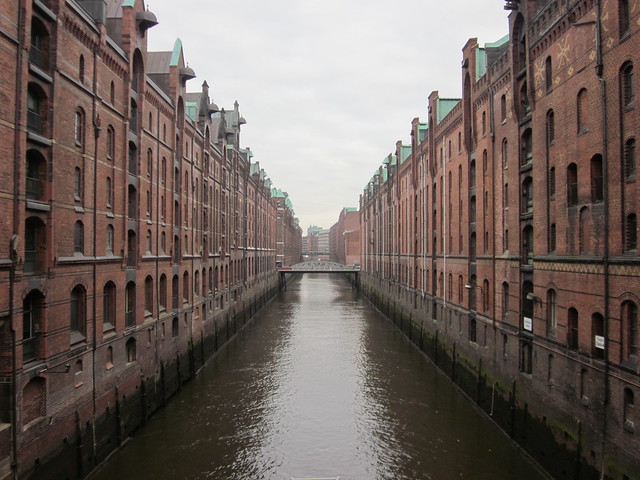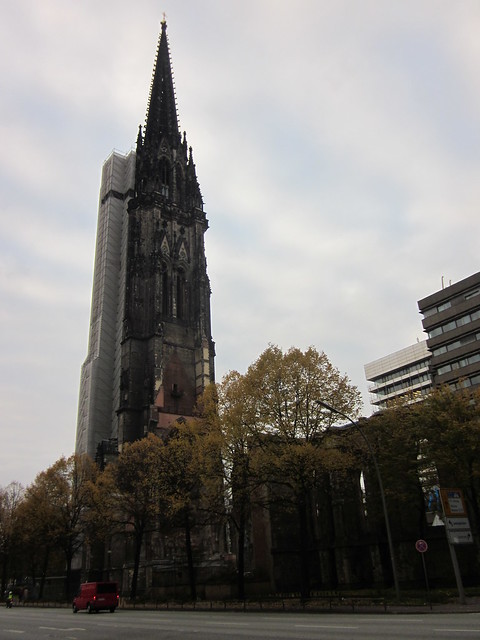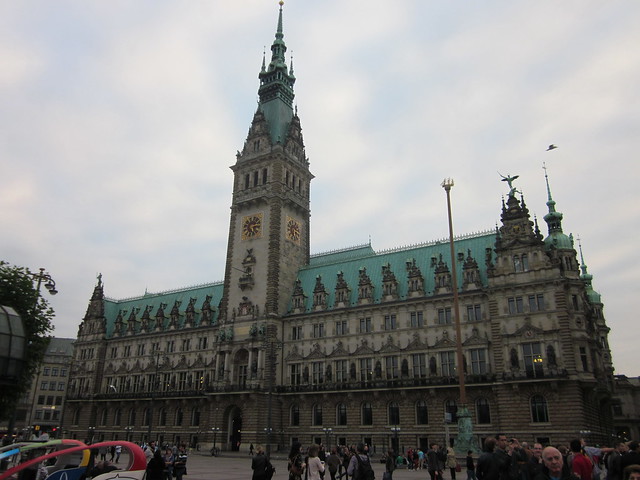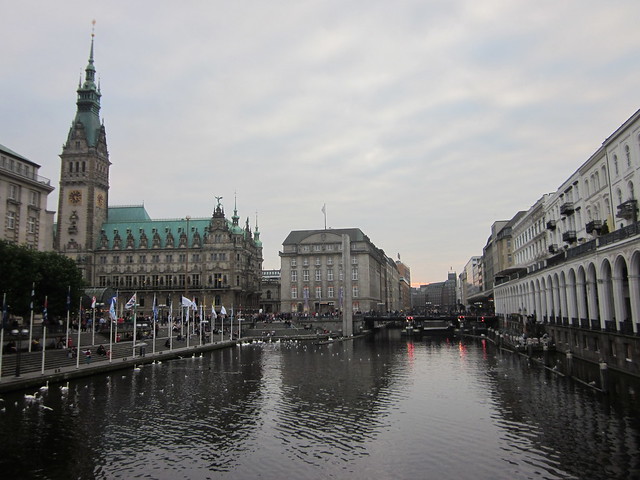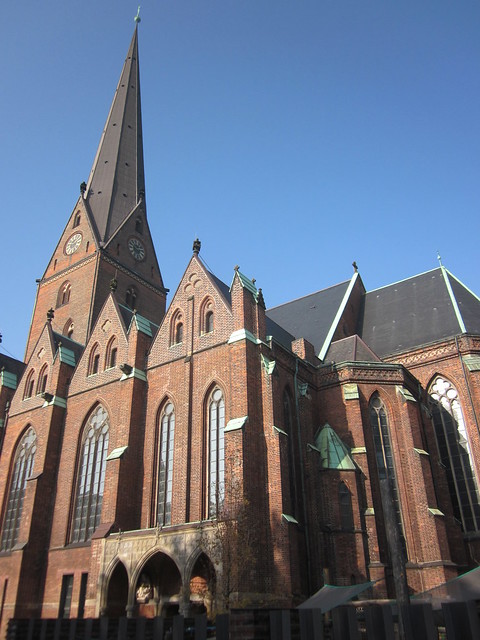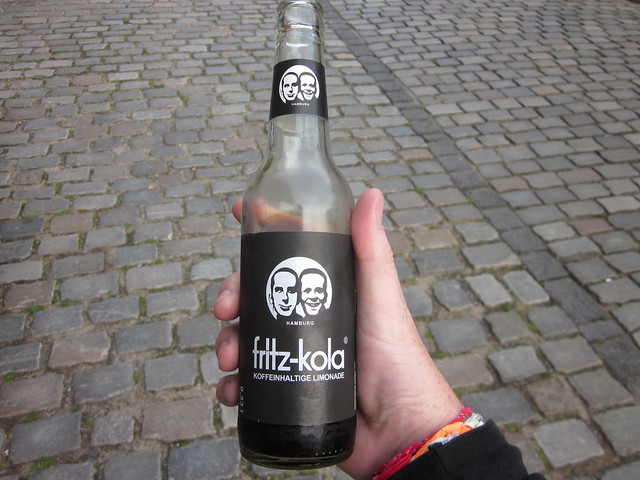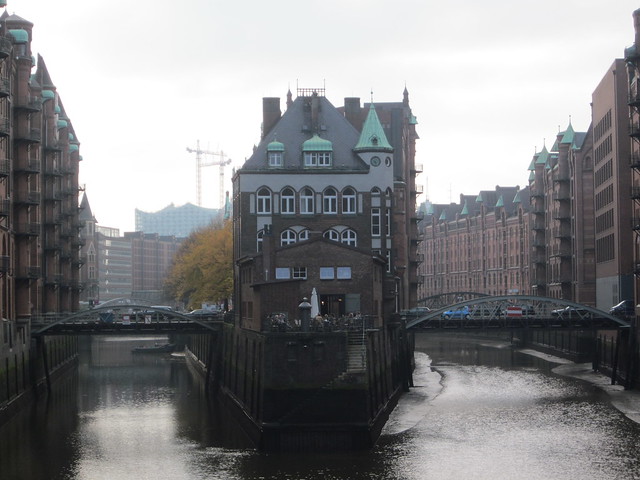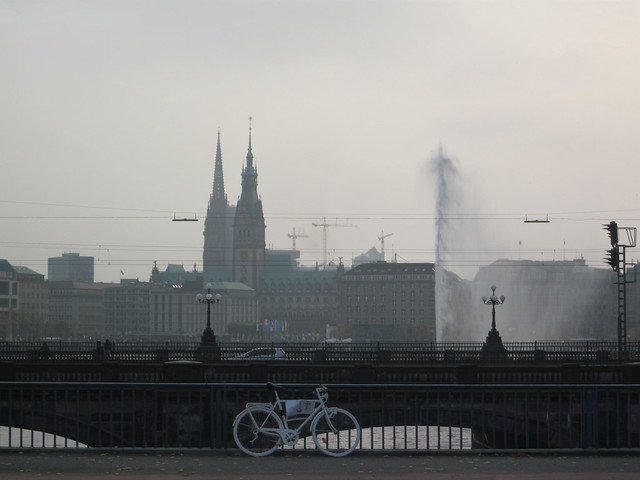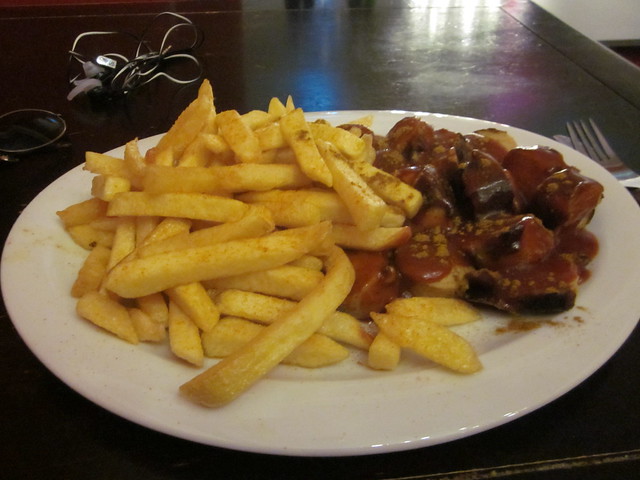Dusseldorf. I can't even begin this post before we all have a collective good laugh at how ridiculous that sounds. Say it with me Du-ssel-dorf. Dusseldorf. It sounds like the name of a retarded wizard. Hahaha... haha... ha. OK. Let's begin.
Dusseldorf is a city primed for mediocrity. It's seventh in total population in Germany and resides in the less edgy, less threatening north Rhein megalopolis zone. I just made that name up but seriously, take a look at the map of Germany around Dusseldorf. In addition to Cologne there are like 15 other cities in the immediate proximity, a handsome number of which I would consider to be "major," although, clearly not "major players." Perhaps some of these cities should consider merging similar to Winston and Salem. Dusseldorf-Duisburg sounds pretty sexy.
Dusseldorf has a sorted history, most notably as nomadic outpost for the resistant Germanic tribes refusing to submit to Roman rule. Alright, an unruly crowd- I like it. It grew a little bit but always remained in the shadow of Cologne until the Industrial Revolution when the city really began to take off. As with every city in the Rheinland, it was annihilated during the Allied bombing raids and was rebuilt into a modern center of banking, trade, administration, and service industries.
But the reason for my brief stopover in Dusseldorf was on recommendation of Niels from Hamburg. Specifically, he recommended to me the Dusseldorf nightlife which is reputedly one of the best in Germany (and certainly better than Cologne). But it wasn't the nightlife that first piqued my interest when I entered the city- it was the strange roundabout on my way to the hostel. I should note that it was a bitterly cold, windy, and slightly rainy day.
Palm trees? Wha? And situated in weird islands made of used tires. First of all, how are these trees not dead? It's freezing in Germany; palm trees won't even survive at my father's place in NC. Second, old used tires? Were they out of rusty anchors and crab nets? But despite my confusion, I was as intrigued as any intrepid traveler would be. "What is the deal with this place?" I thought. Then I thought, "and what's the deal with corn nuts?" followed shortly by, "what the deal with gor-nads!?" Oh Conan.
When I got to the hostel the guy at the desk gave me a cheap photocopied map which, considering I came a whole 30 minutes from Cologne just to see the city and this is the best he could do, almost made me punch him in the mons pubis. But then I noticed that one of the 9 items (only NINE things worth seeing in Dusseldorf- one of which is the hostel?!) was the "best pizza in town by far." I calmed down measurably. I figured, "hey, I could go for some pizza and, if it's terrible, I can always punch him later."
So I put down my stuff and since it was too early to go for dinner I skyped with my mom and sis and got caught up on a little writing and Mad Men. I should note here that the hostel I stayed in, Backpackers-Duesseldorf, was a pretty crappy outfit. They couldn't even spell the city's name correctly. Seems that would be prerequisite number one. But, I'll admit, when I finally made my way to the pizza place, it delivered an exceptionally tasty pie. Not anywhere near Naples standards but thin crust, great sauce, high quality mozz, fresh basil... I was impressed. Sorry the picture isn't as impressive as the pie.
I walked toward the north part of town to check out the acclaimed night life but it seemed relatively quiet. There were certainly an over-adequate number of venues to choose from but I still wasn't really in the mood for a late night outing so I just strolled around for a bit. I eventually made my way back toward the hostel and spotted what appeared to be a near-authentic (as close as you can get in Europe) Mexican restaurant. I couldn't resist stopping in for a Sol and some chips n salsa. And I'll be damned if the chips, salsa, beer, and whole vibe weren't great. The food I saw going out looked pretty good, and check out these menus:
Even if it's only 60% of the quality we get in the States, you can't fault them for trying hard. A+ for effort fellas. Plus, it has to be better than the last Bandido's I ate in (looking at you Chapel Hill).
I went to bed pretty early hoping to get a sold night sleep. Unfortunately, the French crew from way back in Madrid apparently tracked me down and it was the exact same scenario- loud Frenchman partying late, smoking constantly, and yelling to each other loudly at night and in the morning. Not to mention the walls were paper thin and I could hear a group of Germans screaming clear as day in the common room. Ugh.
When I did get up and head out into the city the next morning, my first stop was the Modern Art Museum complex. Right out front there is a giant sculpture of a handgun on the ground. I never did figure out what this was for but the park around the museum was the perfect place to shake off some pent up Frenchstration. Get it? French frustration.
From the hostel it's about a 15 minute walk to the old part of Dusseldorf which is quite small and mostly packed with restaurants, bars, and clubs. Since I neglected to take a photo the night before, here is one of the main nightlife streets in the day- sadly with almost as many people as the night before.
Right in the heart of Dusseldorf is the old town hall, the modesty of which compliments the general so-so vibe of the city. It's not bad, it's just... not the other cities in Germany.
But all hope was not lost for as soon as I left the old town I uncovered three things that really made an impression on me. The first is the striking Konigsallee. I'm not sure if it was just because of the time of year with the autumn colored leaves which made the trees seem as if they had burst into flames, but it was really outstanding. It's also the place where you get the obligatory photo of me and me wearing my new fleece and cap for the first time on the trip!
The next thing that took me by surprise was strolling into Little Tokyo- the Japanese part of Dusseldorf. Apparently Dusseldorf has the largest Japanese community in Germany and third largest in Europe. Why herro there. My interest was certainly piqued. The most imposing feature of this area of town is the Hotel Nikko which boasts several Japanese restaurants, spas, a temple, garden, and some other features I couldn't decipher. It's also really tall.
Finally, and most proudly, it took me all of 16 hours to debunk my map's bold claim of the "best pizza in town by far." When I initially walked through old town I noticed a place boasting pizza di Napoli. "Riiiight" was my first conjecture, however, I peered into the windows and by god if it wasn't a Neapolitan wood fired oven right in the middle of the restaurant. The only problem was- it was only 11am and it was closed! So I resolved to return around 1pm and try out the pizza. And I'm sure freaking glad I did! Not only is it the best in Dusseldorf, it's the best I've had in Europe apart from Naples itself!
Feast your eyes on that beauty. From the edge of the crust in it was perfect. San marzano sauce, fresh fior di latte, thick hand cut spicy salami (closer to a true pepperoni than soppresata picante), and a philanthropic portion of fresh basil! Oh my goodness, oh my goodness. At this point in my great pizzadventures, I was able to take one look at the crust and determine two things: (1) they are using a lower hydration dough (likely because of the proper flour availability or price); and (2) because of this they are cooking at a lower heat than typical in Naples. How do I know this? Time for a quick pizza lesson.
Pizzas made in Napoli use type 00 pizza flour, generally from the Caputo flour company. It's milled extremely fine and has a relatively low protein percentage. Because of it's fine mill and composition, it is more conducive to a wetter softer dough, thereby yielding a tender almost squishy crust that should tear apart easily almost like fresh naan. Second, to cook with wetter dough you need a much higher heat, around 900 to 1000 degrees. The higher heat will create little black blisters around the crust, a phenomenon dubbed by the pizza community as "leopard spotting." Here is a good example from Pizzeria Starita in Napoli.
A typical pie in Napoli will cook for anywhere from 90-120 seconds. Hence the rapid rise, soft inner dough, soupy middle, and leopard spotting. These conditions are also why the Napoletanas use so much fresh fior di latte and mozzerella di buffala as those cheeses break down quickly and are thereby not conducive to a longer cook time. The golden crust you see on this pie means it was cooked for significantly longer- probably between 3-5 minutes, and the density of the crust told me it was not 00 flour. Ok, enough with pizza lesson. Despite not being exactly Neapolitan, the pizza was fantastic and if I had more days I'd pull a Naples and eat there for every meal. Have I mentioned I love pizza?
By this point it was time to make my way back to the hostel and collect my things. I was on my way to Amsterdam to meet (and stay with! :D) an old friend from graduate school Abi and her husband Wes. I had been to Amsterdam before on the tail-end of a 2.5 week trip that included seeing a ton of Germany and visiting my ex's lovely and awesome relatives before Oktoberfest and Budapest with work buddies and then a few nights partying in Prague. Needless to say the last time I was in Amsterdam I was exhausted, tired of booze, and also getting a little sick. This time I'd be heading in as refreshed as a Wanderlust traveler can be and looking forward to a far different experience.
Bonus photo: the waterfront of the Rhein where all the Dusseldorfer's relax and soak in the rays during the summer.
So I put down my stuff and since it was too early to go for dinner I skyped with my mom and sis and got caught up on a little writing and Mad Men. I should note here that the hostel I stayed in, Backpackers-Duesseldorf, was a pretty crappy outfit. They couldn't even spell the city's name correctly. Seems that would be prerequisite number one. But, I'll admit, when I finally made my way to the pizza place, it delivered an exceptionally tasty pie. Not anywhere near Naples standards but thin crust, great sauce, high quality mozz, fresh basil... I was impressed. Sorry the picture isn't as impressive as the pie.
I walked toward the north part of town to check out the acclaimed night life but it seemed relatively quiet. There were certainly an over-adequate number of venues to choose from but I still wasn't really in the mood for a late night outing so I just strolled around for a bit. I eventually made my way back toward the hostel and spotted what appeared to be a near-authentic (as close as you can get in Europe) Mexican restaurant. I couldn't resist stopping in for a Sol and some chips n salsa. And I'll be damned if the chips, salsa, beer, and whole vibe weren't great. The food I saw going out looked pretty good, and check out these menus:
Even if it's only 60% of the quality we get in the States, you can't fault them for trying hard. A+ for effort fellas. Plus, it has to be better than the last Bandido's I ate in (looking at you Chapel Hill).
I went to bed pretty early hoping to get a sold night sleep. Unfortunately, the French crew from way back in Madrid apparently tracked me down and it was the exact same scenario- loud Frenchman partying late, smoking constantly, and yelling to each other loudly at night and in the morning. Not to mention the walls were paper thin and I could hear a group of Germans screaming clear as day in the common room. Ugh.
When I did get up and head out into the city the next morning, my first stop was the Modern Art Museum complex. Right out front there is a giant sculpture of a handgun on the ground. I never did figure out what this was for but the park around the museum was the perfect place to shake off some pent up Frenchstration. Get it? French frustration.
From the hostel it's about a 15 minute walk to the old part of Dusseldorf which is quite small and mostly packed with restaurants, bars, and clubs. Since I neglected to take a photo the night before, here is one of the main nightlife streets in the day- sadly with almost as many people as the night before.
Right in the heart of Dusseldorf is the old town hall, the modesty of which compliments the general so-so vibe of the city. It's not bad, it's just... not the other cities in Germany.
But all hope was not lost for as soon as I left the old town I uncovered three things that really made an impression on me. The first is the striking Konigsallee. I'm not sure if it was just because of the time of year with the autumn colored leaves which made the trees seem as if they had burst into flames, but it was really outstanding. It's also the place where you get the obligatory photo of me and me wearing my new fleece and cap for the first time on the trip!
The next thing that took me by surprise was strolling into Little Tokyo- the Japanese part of Dusseldorf. Apparently Dusseldorf has the largest Japanese community in Germany and third largest in Europe. Why herro there. My interest was certainly piqued. The most imposing feature of this area of town is the Hotel Nikko which boasts several Japanese restaurants, spas, a temple, garden, and some other features I couldn't decipher. It's also really tall.
Finally, and most proudly, it took me all of 16 hours to debunk my map's bold claim of the "best pizza in town by far." When I initially walked through old town I noticed a place boasting pizza di Napoli. "Riiiight" was my first conjecture, however, I peered into the windows and by god if it wasn't a Neapolitan wood fired oven right in the middle of the restaurant. The only problem was- it was only 11am and it was closed! So I resolved to return around 1pm and try out the pizza. And I'm sure freaking glad I did! Not only is it the best in Dusseldorf, it's the best I've had in Europe apart from Naples itself!
Feast your eyes on that beauty. From the edge of the crust in it was perfect. San marzano sauce, fresh fior di latte, thick hand cut spicy salami (closer to a true pepperoni than soppresata picante), and a philanthropic portion of fresh basil! Oh my goodness, oh my goodness. At this point in my great pizzadventures, I was able to take one look at the crust and determine two things: (1) they are using a lower hydration dough (likely because of the proper flour availability or price); and (2) because of this they are cooking at a lower heat than typical in Naples. How do I know this? Time for a quick pizza lesson.
Pizzas made in Napoli use type 00 pizza flour, generally from the Caputo flour company. It's milled extremely fine and has a relatively low protein percentage. Because of it's fine mill and composition, it is more conducive to a wetter softer dough, thereby yielding a tender almost squishy crust that should tear apart easily almost like fresh naan. Second, to cook with wetter dough you need a much higher heat, around 900 to 1000 degrees. The higher heat will create little black blisters around the crust, a phenomenon dubbed by the pizza community as "leopard spotting." Here is a good example from Pizzeria Starita in Napoli.
A typical pie in Napoli will cook for anywhere from 90-120 seconds. Hence the rapid rise, soft inner dough, soupy middle, and leopard spotting. These conditions are also why the Napoletanas use so much fresh fior di latte and mozzerella di buffala as those cheeses break down quickly and are thereby not conducive to a longer cook time. The golden crust you see on this pie means it was cooked for significantly longer- probably between 3-5 minutes, and the density of the crust told me it was not 00 flour. Ok, enough with pizza lesson. Despite not being exactly Neapolitan, the pizza was fantastic and if I had more days I'd pull a Naples and eat there for every meal. Have I mentioned I love pizza?
By this point it was time to make my way back to the hostel and collect my things. I was on my way to Amsterdam to meet (and stay with! :D) an old friend from graduate school Abi and her husband Wes. I had been to Amsterdam before on the tail-end of a 2.5 week trip that included seeing a ton of Germany and visiting my ex's lovely and awesome relatives before Oktoberfest and Budapest with work buddies and then a few nights partying in Prague. Needless to say the last time I was in Amsterdam I was exhausted, tired of booze, and also getting a little sick. This time I'd be heading in as refreshed as a Wanderlust traveler can be and looking forward to a far different experience.
Bonus photo: the waterfront of the Rhein where all the Dusseldorfer's relax and soak in the rays during the summer.


